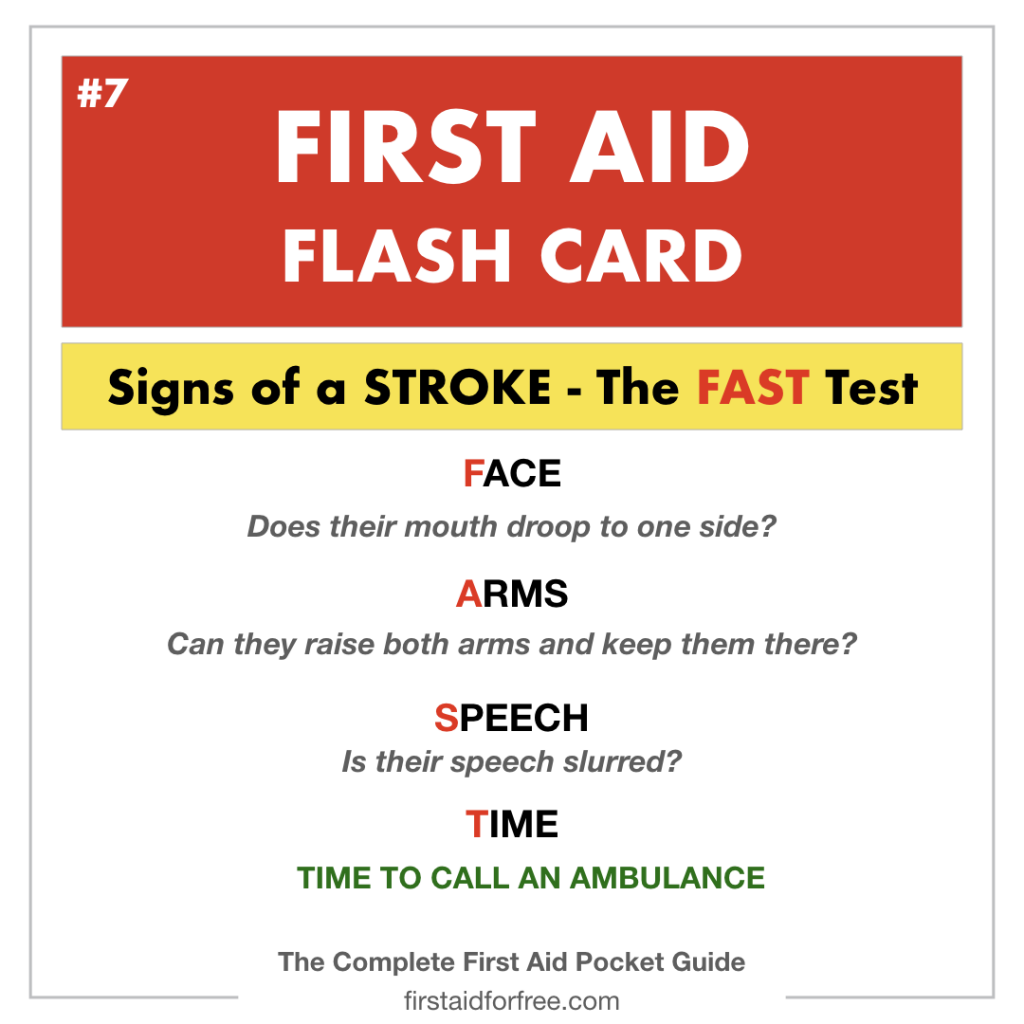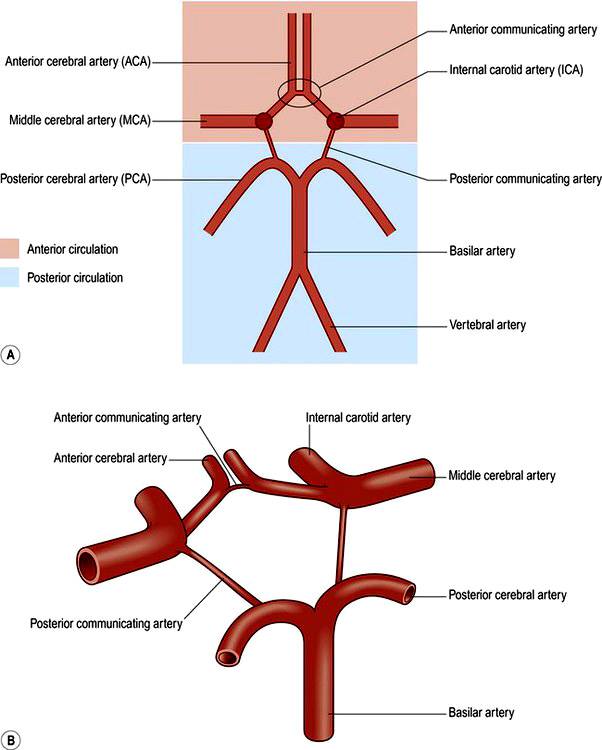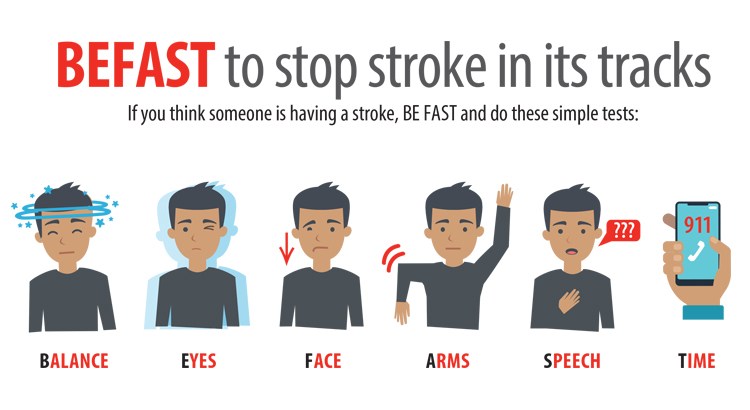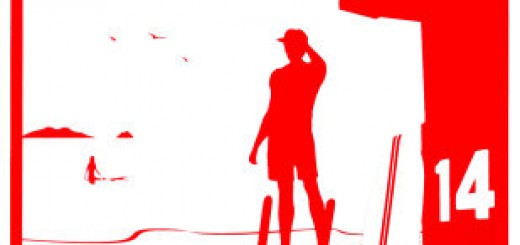Why the FAST test can miss a stroke
The ‘FAST’ test is a commonly used tool to remember the key signs and symptoms of a stroke (cerebrovascular event, or CVE). The FAST test is widely taught on first aid/CPR courses globally. The FAST test stands for:
- Face: is there any facial droop?
- Arms: can they raise both arms and keep them there?
- Speech: is there any slurred speech or speech disturbance?
- Time: time to call for emergency medical help if any of the above features are present

Stroke is a ‘time-critical’ situation, urgent medical treatment is required to restore adequate blood flow to the brain and prevent permanent brain damage. Therefore, being able to recognize the signs and symptoms of a stroke is vital. However, not all strokes will be detected by the ‘FAST’ test.
The FAST test can miss a stroke
Some types of strokes can be missed using the FAST test. The patient will be having a stroke, but they will not have any facial droop, arm weakness or slurred speech. To understand this, we need to explore the blood supply to the brain.
The brain’s blood supply is complex. Broadly, it can be divided into an anterior (front) section and posterior (rear) section as shown in the diagram below.

The FAST test is good for detecting a stroke in the anterior circulation. These blood vessels supply the parts of the brain that control our motor function and muscle movements. Therefore, a stroke in this area will cause the typical features of facial droop, arm weakness and slurred speech due to paralysis of the facial muscles.
However, a stroke affecting the posterior circulation may not cause any muscle weakness. The posterior circulation supplies the visual cortex (responsible for allowing us to see) and the cerebellum (responsible for balance). Therefore, signs of a posterior circulation stroke include:
- Vertigo (the illusion of movement)
- Visual problems – partial or complete loss of vision
- Unsteady movements (walking or arm movements)
- A tremor when reaching for an object
- Headache
These features will result in the patient being ‘FAST negative’ but still having a stroke. Headache is more common in posterior circulation than anterior circulation strokes.
BE-FAST
So how can we detect a posterior circulation stroke? The FAST test can be adapted to improve it’s the ability to detect a posterior circulation stroke. BE-FAST adds two extra checks (balance and eyes) to the traditional FAST test.





